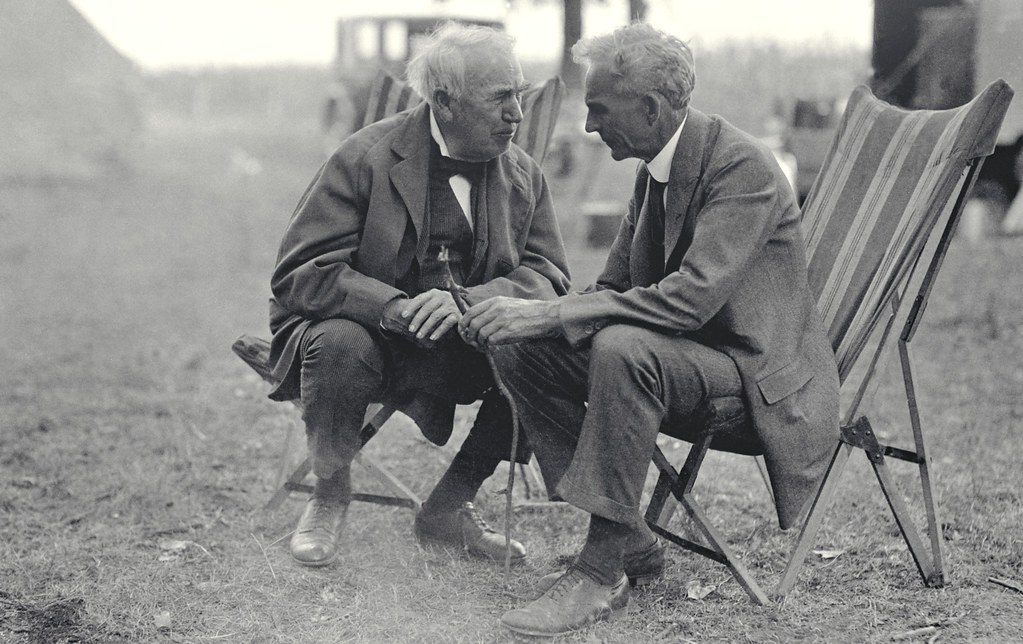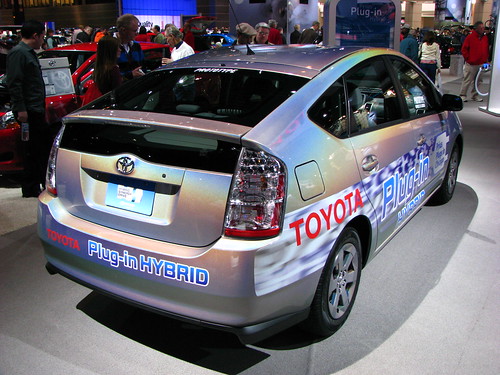Just before Christmas I had a chat with Ford’s head of battery electric vehicle applications, Greg Frenette. We discussed how Ford has been working with utilities and industry organisations to ready its electric vehicles for deep integration into smart grids.
It was fascinating for me to see just how far Ford have proceeded with their thinking on this.
Here’s the transcript of our conversation.
Tom Raftery: Hi everyone and welcome to GreenMonkTV. My guest in the show today is Greg Frenette. Greg is the Manager of Battery Electric Vehicle Applications for the Ford Motor Company. Greg let’s start of with a bit of historical background. Ford have been looking at electric vehicles for some time now; I think 2005 was when you started looking at electric vehicles and smart grid integration. Were you working on electric vehicles even before that?
Greg Frenette: Oh! Sure, we’ve been working on electric vehicles for over 20 years, in our research organization primarily. And when I say electric, I talk about not only battery electric, but fuel cell electric vehicles. But it was in 2007 when we decided to explore a demonstration fleet of plug-in vehicles, plug-in hybrids that we started thinking very seriously about the integration of those vehicles with the grid and in July 2007 announced a partnership with Southern California Edison, which has since grown to a partnership with about 12 different utilities and industry organizations.
Tom Raftery: What is the basis of that partnership, I mean Southern Cal Edison is a utility company, is it that you are test bedding your electric vehicles to see how they fit in with smart grids or what’s the basis of the partnership?
Greg Frenette: That’s exactly it. We’ve got some very high-fidelity Ford Escape production vehicles that have been modified with Lithium-Ion battery packs and charging systems and we’re really exploring what the interaction of that vehicle with the grid is like. We are trying to get a better understanding of the win-win solutions between industries that’ll be necessary in order to commercialize plug-in hybrids as well as full battery electric vehicles.
Tom Raftery: From the research, what are you guys seeing, how well do electric vehicles, battery electric vehicles — how well do they integrate with smart grids?
Greg Frenette: I think the opportunity is tremendous. With our plug-in Escape fleet of about 21 vehicles that we’ve deployed across North America we’re now in the process of setting up communications and actually demonstrating communications between the vehicles and smart meters which are becoming more and more available today in the market.
So we are finding that whole idea of how a vehicle interfaces with the grid is more than simply plugging it in; there’s an opportunity to communicate and an opportunity for the consumer – automotive consumer, electric consumer to make choices and to communicate those choices back and forth from the vehicle to the grid and vice versa.
I’ll give you an example; if you are sitting in one of our plug-in Escape prototypes, hybrid prototypes, today, what you’d find is if you decided you didn’t want to start charging until the rates are cheaper say around midnight or so you could tell the vehicle don’t charge until then, or if you wanted a full charge by a certain time in order to return home or whatever you could then dictate that, communicate it through the vehicle to a smart meter that would then modulate the charges such a way to meet your needs.
Tom Raftery: Interesting! So you are basically shifting your consumption to match times when electricity is less expensive.
Greg Frenette: You can do that; you can also, though, if you are plugged in and you don’t have a need for a particular charging and you have some freedom flexibility, you can indicate that you are willing to accept interruptible service in order to, again, reduce the cost of charging your vehicle. So that’s just the tip of the iceberg of the, sort of, communications that will become available in vehicles and the, kind of, capability we’ll have to really interact with the grid and dictate how we use energy with vehicles.
Tom Raftery: One of the other issues around integration of Battery Electric Vehicles and smart grids is the billing. So say if I go and visit somebody else, some cousins or some neighbours or some family or something and they live a couple of hours away and I need to charge to get home, can I plug in my vehicle in to their electric outlets and have it billed back to my account, is that — are you working on those kinds of integrations as well?
Greg Frenette: Absolutely! One of the real beauties of Ford partnering with a number of utilities across North America is we are exploring those sorts of scenarios and so this whole idea of mobile billing, how that occurs how it takes place is something we are exploring along with a number of other interface opportunities and challenges that we want to face and work out together.
Tom Raftery: Another issue that people raise around electric vehicles is if an electric vehicle is being charged by a utility who are burning coal are they outputting more CO2 than they would if the same car was running off gas?
Greg Frenette: Well that scenario could certainly present itself. One of the things — one of the opportunities that may present itself in how consumers interact with the grid is you may dictate through your vehicles or through an interface at the meter — you may dictate that you want the greenest form of charging.
In other words you will dictate that you will charge at times when the least the amount of coal is being burnt and perhaps other sources of energy are being made available to the grid. So that sort of thinking is something that we are currently engaged at. At the end of the day, though, the total environmental solution is more than a solution at the tailpipe of the vehicle. It has to be what we call a wells-to-wheels solution, and so the energy industry sees the role, I think, they need to play in helping drive emissions down, helping us really improve the environment together.
Tom Raftery: Okay, one last question Greg. When will I see a Ford Battery Electric Vehicle in the showroom?
Greg Frenette: Well, our current plans, today, call for Ford Transit Connect Battery Electric Vehicles to begin coming off our production line at the end of next year (2010).
The following year, 2011, we are currently scheduled to be putting out a full electric Ford Focus Battery Electric Vehicle and then our plans beyond then, 2012 and beyond, call for a plug-in hybrid, a version of the vehicles that we are currently running in demonstration today. So we are not talking about a long-term reality here; what we are really talking about is vehicles that are currently under design and development and will be deployed out in to the public very shortly.
Tom Raftery: Superb Greg, that’s been fantastic. Thanks for agreeing to come on the show.
Related articles by Zemanta
- Ford to roll out plug-ins, battery electric vehicles in coming years (businessgreen.com)
- Ford and Azure Dynamics team up to deliver battery electric commercial van in 2010 (newswire.ca)
- Notes from the 2010 Detroit auto show (seattletimes.nwsource.com)
- Ford’s Electrifying Plan To Boost Efficiency (wired.com)
- Toyota Unveils Compact Dedicated Hybrid Concept, Reveals Future Plan For “Prius Family” North American Marketing Strategy (newswire.ca)
- 21 companies that will lead the green car charge (green.venturebeat.com)




